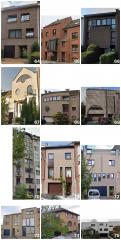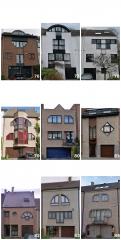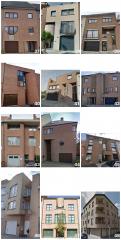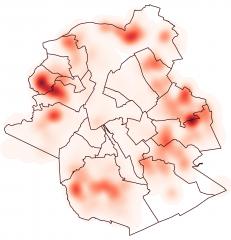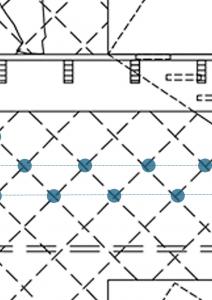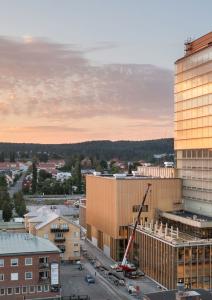Recognizing young architectural heritage
An analysis of 1970-2000 facing bricks in Brussels Capital Region’s housing

How to recognize heritage value of brick architecture from 1970-2000 in the Brussels Capital Region’s housing?
This thesis explores the use of facing brick in residential architecture within the Brussels-Capital Region (BCR) from 1970 to 2000, addressing the challenge of recognizing and assessing contemporary architectural heritage. By examining a broad range of residential buildings, the research aims to understand how brick facades from this period reflect architectural expression and technical advancements and to identify the era's distinctive features. The study employs an extensive survey of residential buildings, analyzing architectural typologies such as row houses, villas, and apartment buildings. It includes a detailed review of historical and technical literature, particularly focusing on the Terre cuite et construction periodical, to trace advancements in brick manufacturing and construction methods. The research also examines current heritage assessment methods to assess prevailing values and understand the historical significance of facade expressions.
The findings reveal that 85% of residential buildings from this period feature brick facades, with row houses being the most prevalent. The study identifies a shift towards a combination of traditional brick usage and new formal expressions post-1980, highlighting how these facades blend historical continuity with a new language. Additionally, the research uncovers a nuanced approach to technical value, emphasizing the impact of manufacturing innovations and construction methods on facade character. Along with technical advancements... the period is marked by a tendency to evoke traditional images through modern techniques.
The thesis concludes that current heritage frameworks, which often emphasize aesthetic value, may overlook this period's historical and technical nuances. It advocates for a more integrated approach to heritage assessment that considers the interconnectedness of aesthetic, historical, and technical aspects. ...This research contributes to a deeper understanding of the period's architectural identity and could inform more effective preservation strategies. Recognizing these complexities is crucial for developing policies that accurately reflect and protect the architectural heritage of the late 20th century. This study enhances the appreciation of the architectural character of the BCR from 1970 to 2000 and sets a precedent for future research in architectural heritage relating to the period of interest.
Keywords
young heritage, brick, facade...
- Academic year
- 2024-2025
- Date of defense
- 2 September 2024
- Theme
- theory and criticism in architecture, urbanism
- Director 1
- Stephanie Van de Voorde (VUB)

